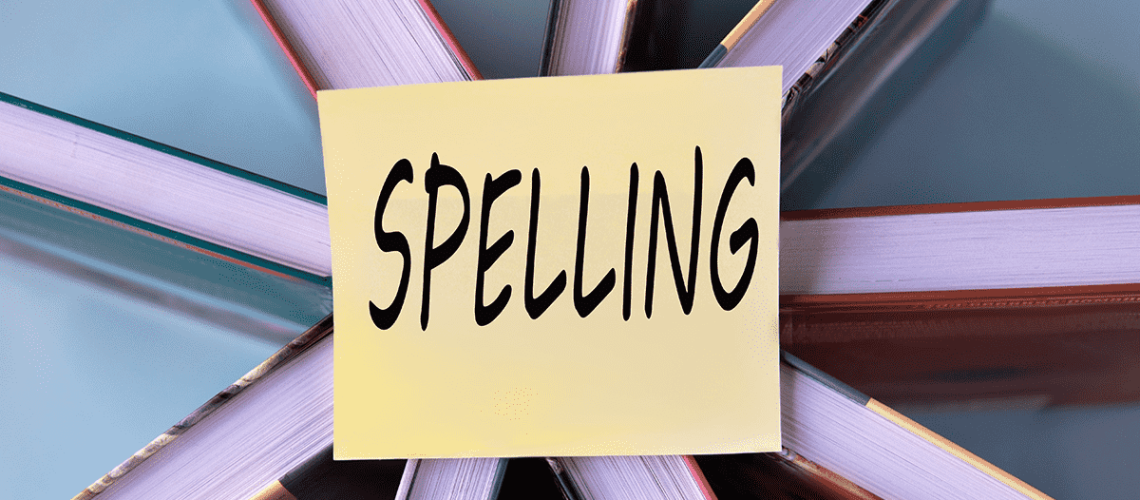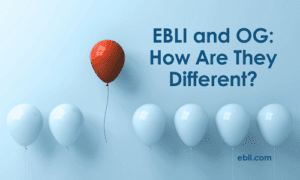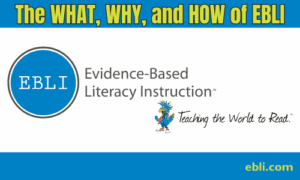If you can spell a word (by sound, not memorization), you can read that word!
The reverse is not typically true.
Many competent to exceptional readers do not excel in spelling, but exceptional spellers almost always excel in reading. Why is that?
Even though reading and spelling are ‘two sides of the same coin’, meaning they utilize the same code, learning to spell is much more challenging than learning to read.
Spell Better, Read Better
Think of a word that you can read easily and effortlessly (and know the meaning of) but struggle to spell. Some of those words for me: naïve, definitely, and phenomenal.
Reading is receptive and requires recognition, meaning the words are there for you to look at or ‘pick up’ off the page whether you are using memorization or are decoding the words.
Spelling is expressive and requires retrieval. You are looking at a blank page and must pull correct spellings from your brain to put down on the blank page to spell the word. This is close to impossible to do from memorization and is even challenging when segmenting the word and matching the letter(s) to each sound.
Here is an example: If you are wishing to spell the word ‘chaos’, you aren’t looking at it. You must retrieve information about what spellings represent each of the sounds. For example, the sound /k/ is spelled with ‘ch’ as opposed to ‘c’ or ‘k’. For the /ai/ sound, you must retrieve the letter ‘a’. There are many other potential options for spelling this sound such as ai, ea, ei, e, or eigh.
Learning to spell is a lifelong endeavor. No one, including the Scripps Spelling Bee participants, knows how to spell all the words! All of us can become highly proficient, if not perfect, spellers. Spelling is a progression and almost always lags behind reading, regardless of one’s literacy prowess. However, those who have struggled with reading typically struggle even more with spelling. Their spelling will take even longer to remediate.
K Student, Fall
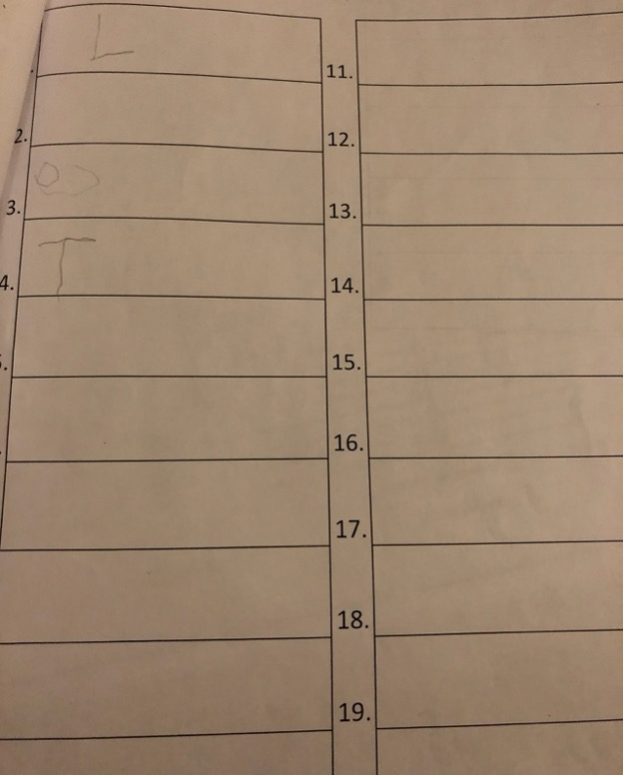
K Student, Spring
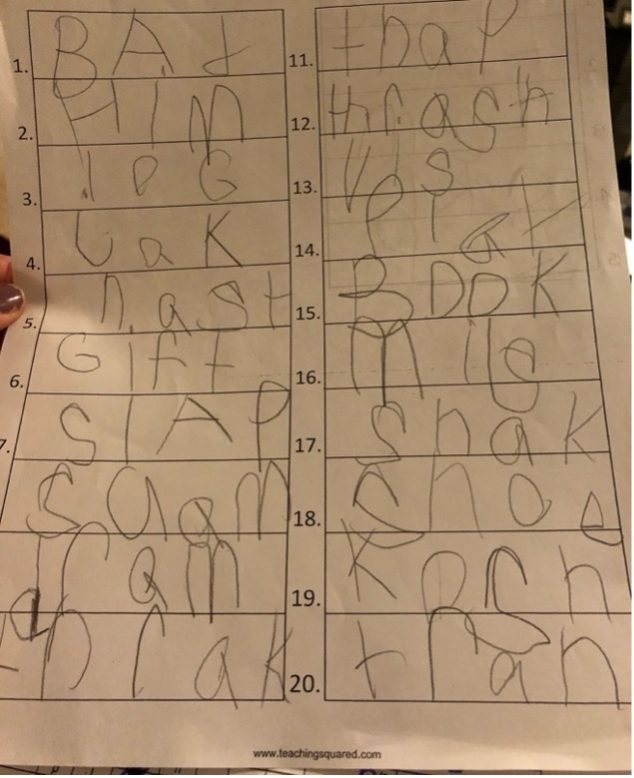
Back in the 1990’s, my subliterate daughter could spell all the words correctly on a spelling test. However, she would misspell the exact same words in her writing, sometimes even the same day as the test. What is that about? She had an exceptional visual memory and used rote memory to memorize the string of letters for the words. This is much like we used to do in the pre-cell phone days where we had to memorize a phone number. We would dial the number, talk to the person, and forget what that number was. Colleen, like many students, memorized those letter strings for the purpose of the spelling test then promptly forgot it.
If students show mastery of spelling for an assessment but can’t transfer that information to everyday, authentic writing, then they haven’t mastered the spelling. They have been given a fish as opposed to having learned how to fish.
With spelling, we want children to learn a process so that they can transfer what they have learned to correctly spell a wide range of words in any situation requiring writing or spelling.
How do we do this? All of the information shared below will be expanded on with examples in the companion Spell Better, Read Better free EBLI webinar.
Accurate spelling requires knowledge of the sound, not the letter name. The same is true for reading when instruction leads with the sounds in the word vs the names of the letters in the word.
Here are some challenges that occur when using letter names vs sound to teach spelling:
- Every consonant letter name is at least 2 sounds long.
- b= /b/ /ee/
- r= /ah/ /r/
- w = /d/ /u/ /b/ /l/ /y/ /oo/
- y= /w/ /igh/
- Using letter names instead of sounds to spell results in frequent misspellings.
- fr (far)
- dcv (deceive)
- obdnc (obedience)
- Words are made up of sounds, not letter names.
- Letter names are good to know but sounds are more important for reading and spelling.
- Speaking (using sounds pushed together to create words) is natural
- Letter names are man-made
With EBLI, we teach sounds for reading and spelling as opposed to letter names. When it comes to literacy, the letter names are like our middle names. It is good to know them when needed but they are not the ‘main event’ or the most necessary information to best get the job of reading and spelling done.
As with any instruction, it is important that students learn, practice, and apply the correct way to spell words. If children – or adults – practice doing something incorrectly then these mistakes become automatic and embedded. After extensive practice at misspelling, it is more difficult to remediate their inaccurate practices. This is especially true with spelling as so many learners have practiced spelling wrong for so long it becomes their norm. Any of us who have tried to diet or make lifestyle changes know firsthand how challenging it is to change a habit that is deeply ingrained.
It is critical to provide students with correct spellings in words and have THEM write the correction (not just see the correction) so the last thing imprinted on their brain is the accurate spelling. Of course, students can write a sloppy copy that will include inaccurate spellings of words. Emerging readers and writers will need more support and corrections at first. Dictated writing with immediate corrections is an effective bridge to gradually guiding students to independent writing.
Our job is to provide them with the correct spellings and writing conventions and then have them rewrite their piece. When I write a blog or anything I will publish, I edit after receiving feedback and corrections from my team. This is the process book publishers use before the book is finalized and sold to the public. It is the process that should be used with our students when they write too.
When we let inventive spellings sit in the student’s brain without providing correction and rewriting, then students get to be very good at inventive spelling. The spelling system was invented a few centuries ago by hundreds of scholars so that we would have acceptable ways of spelling that we all use so we can read what others write and communicate effectively.
The English alphabetic code was invented so that our talk could be written down. It got a bit messy when the spellings from several languages were used to represent the sounds but, when we understand the logic of the system and teach that logic to our students, it is an elegant, excellent, interesting system for reading and spelling.
The sounds in each word we say are represented with letter(s). It is that simple! Some of the spellings are quite interesting. If you look at the word suite, the ‘u’ represents /w/. How wild is that?!
Because our speech sounds are represented by 1-4 letters, all words can be broken into sounds and all sounds are represented by letters. With spelling, you also want to address morphology to bolster students for both meaning and spelling. For example, the word magician ends in ‘cian’, which denotes a person. This /sh/ /u/ /n/ spelling (ci a n) is different than the different spellings for the same /sh/ /u/ /n/ sounds in lotion (ti o n), mission (ssi o n), pension (si o n), and fashion (shi o n). The root word ‘magic’ in magician gives another clue to the meaning and spelling of the word.
What is the very best way to improve spelling, especially in children and adults who have misspelled words pervasively for years? It takes work. Progressing toward accurate and automatic spelling is going to take much more time than achieving accurate and automatic reading.
Explicit instruction in the alphabetic principal is the first step. Match the sounds we say in words with the letter(s) that spell them. Next, apply what was learned with support and correction, moving to independence. Like with reading, explicit instruction and moving quickly to intrinsic learning with application all along the way is key. This means isolated, siloed instruction with spelling lists or drills is not the ideal path. Utilizing what was learned by applying it in reading and writing makes the process meaningful and relevant to students, thus more ‘sticky’ in the brain.
If you are interested in helping improve spelling for learners, this EBLI Spelling Mini-Course provides instruction and resources for you to improve student spelling in the manner discussed in this blog.
2nd Grade - October 2023

2nd Grade - May 2024
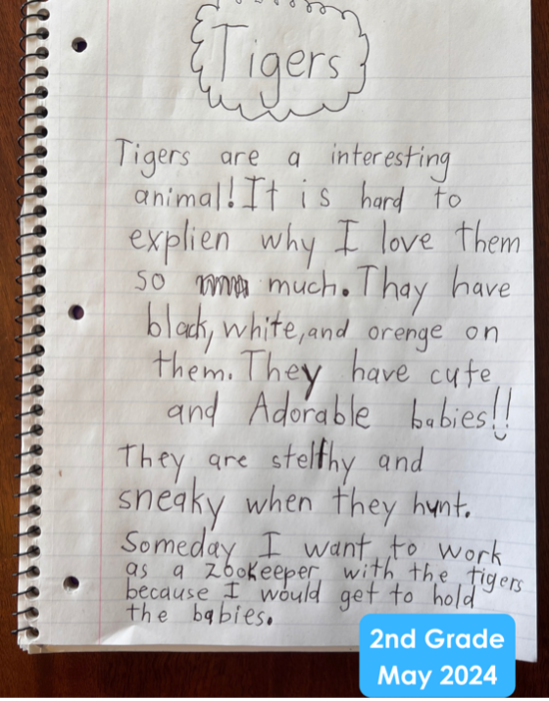
Below are my two favorite books that discuss spelling and research on spelling. They are both by Dr. Diane McGuinness, written 6 years apart. One of the many exceptional traits about both is the quality and quantity of references provided. There are hundreds of references in each book. Virtually everything she writes in these books is backed up by citations to research!
Dr. Diane McGuinness Recommended Reading:
Why Our Children Can’t Read and What We Can Do About It
Early Reading Instruction: What Science Really Tells Us About How to Teach Reading
As always, the best outcome for learners should be the focus of our instruction and discussions! How do we most effectively and efficiently teach and remediate spelling so that the information transfers to spelling in writing? If our students are not proficient spellers, our job with teaching them is to keep learning ourselves and shifting our instructional practices until they are.

